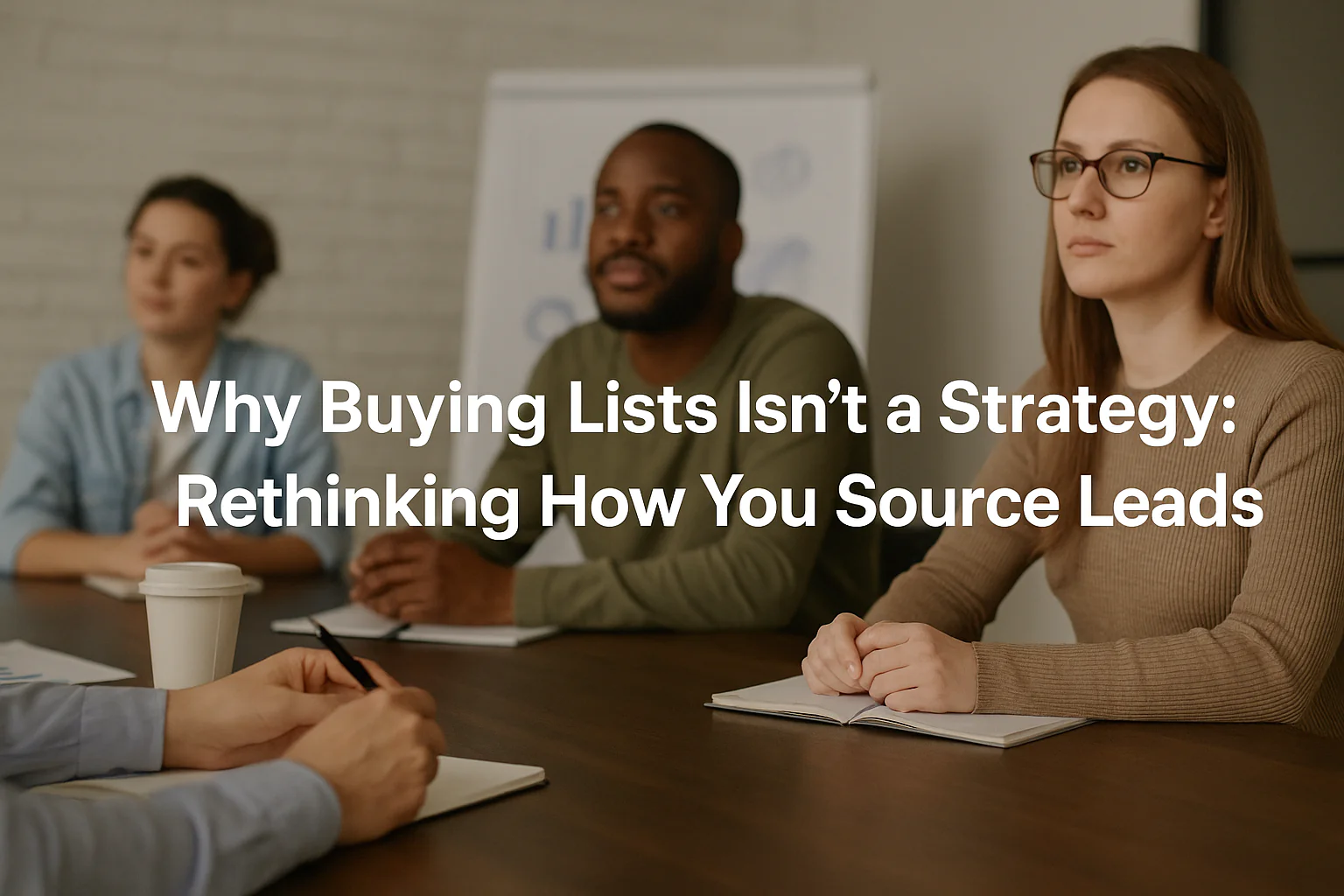For many businesses, the temptation is real: why spend time building a pipeline when you can simply purchase access to one? The promise is seductive—thousands of names, titles, and email addresses at your fingertips, ready to contact. But here’s the truth: buying access to data isn’t a growth strategy. It’s a shortcut that often highlights deeper cracks in your process.
The Illusion of “Easy Leads”
When companies invest in a lead database, the expectation is that opportunity will follow automatically. But raw data is not the same as qualified leads. Without context, process, and a strong sales framework, those names are just names.
Think of it like filling a shopping cart at the grocery store without knowing what recipe you’re cooking. Sure, you have ingredients, but without a plan, you don’t have a meal.
Where the Real Work Happens
The success of your outreach isn’t about how many contacts you can buy—it’s about how your internal processes manage those contacts:
- Segmentation: Are you clear about which industries, regions, or decision-makers actually convert for your business?
- Messaging: Do you have personalized outreach sequences designed to resonate with each type of buyer, or are you sending generic blasts that fall flat?
- Follow-Up: Do you have a system for consistent follow-up, or are you hoping someone replies to your first message?
- Tracking: Do you measure response rates, conversation starters, and conversion metrics, or are you just tallying how many emails were sent?
Without these pieces in place, even the best data source won’t save you.
Why Businesses Need to Formalize Their Process
It’s easy to blame poor results on the list provider. But more often than not, the real challenge is internal. Businesses jump straight into outreach without mapping their sales process end-to-end.
Ask yourself:
- Do we know our ideal customer profile, and is it documented?
- Have we built lead scoring criteria that separates “just curious” from “ready to buy”?
- Is marketing aligned with sales on what defines a qualified lead?
- Are we investing in relationships, or just transactions?
When you formalize these steps, the quality of your outreach improves. The leads you do pursue start to look less like random names and more like real opportunities.
The SEO Angle: Lead Generation as a Process, Not a Purchase
If you’re researching “how to generate more leads,” chances are you’ve come across a flood of ads promising shortcuts. But SEO isn’t about shortcuts; it’s about long-term visibility. And the same applies to lead generation.
According to HubSpot, Companies that engage in blogging receive 97% more backlinks to their site (HubSpot). Search intent shows us that buyers want answers to:
- What’s the best way to qualify a lead?
- How do I align marketing and sales to convert faster?
- What are proven systems for lead nurturing?
By focusing on process-driven content, your business not only improves how you generate leads but also attracts organic search traffic from people asking these very questions.
Organic Ways to Boost Your Efforts (Without Spending More Money)
You don’t need a huge ad budget to improve results. Here are sustainable, no-cost ways to boost visibility and engagement:
- Publish case studies showing how a process-driven approach outperforms quick fixes.
- Repurpose content into LinkedIn posts, carousels, or short videos—each touchpoint reinforces your credibility.
- Leverage email nurture campaigns that teach, not sell. When prospects see you as a trusted voice, your database works harder for you.
- Collaborate with partners in your industry to share insights and expand your reach organically.
- Double down on SEO blogging with keywords like lead qualification process, sales pipeline optimization, customer journey mapping, and improving outreach conversions.
Final Thought
Access to names and email addresses isn’t the problem—it’s what you do with them that matters. Businesses that skip the step of defining, aligning, and optimizing their internal processes end up burning through lists with little to show for it.
But those who invest the time to formalize their approach—mapping journeys, aligning teams, and measuring outcomes—discover something powerful: real growth comes not from buying data, but from building systems that transform contacts into customers.



